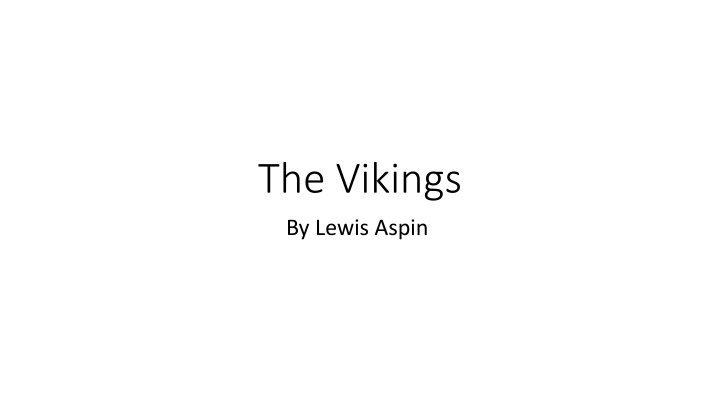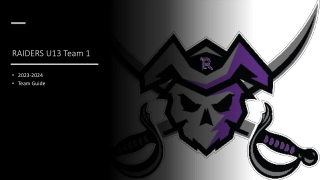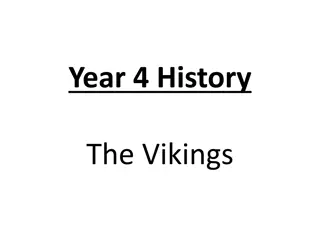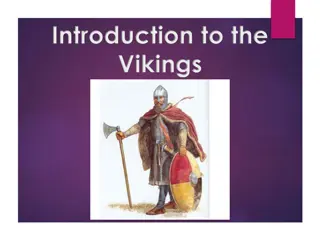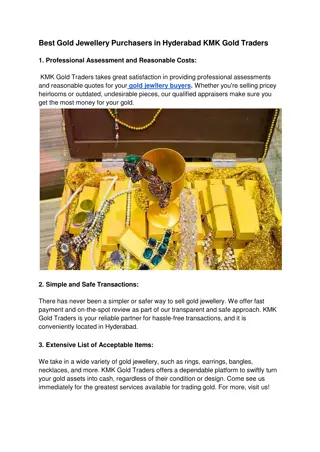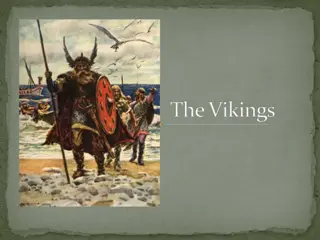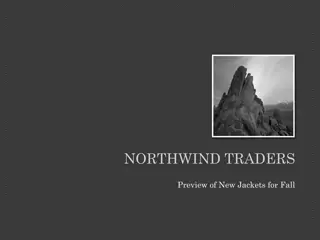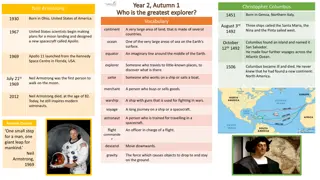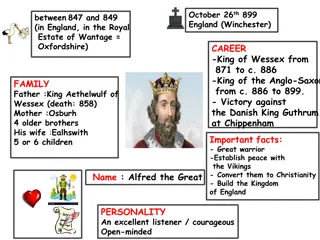The Fascinating World of the Vikings: Raiders, Traders, and Explorers
The Vikings, hailing from Scandinavia, were renowned for their daring expeditions to raid, trade, and explore distant lands. Their legacy extends to genetic mutations, hygiene practices, ski worship, and cultural beauty ideals. Discover the intriguing nuances of Viking life and society, from their maritime ventures to social customs.
Download Presentation

Please find below an Image/Link to download the presentation.
The content on the website is provided AS IS for your information and personal use only. It may not be sold, licensed, or shared on other websites without obtaining consent from the author.If you encounter any issues during the download, it is possible that the publisher has removed the file from their server.
You are allowed to download the files provided on this website for personal or commercial use, subject to the condition that they are used lawfully. All files are the property of their respective owners.
The content on the website is provided AS IS for your information and personal use only. It may not be sold, licensed, or shared on other websites without obtaining consent from the author.
E N D
Presentation Transcript
The Vikings By Lewis Aspin
The Vikings were famous for sailing huge distances from their home in Scandinavia between AD 800 and 1066 to raid and plunder, but they also traded with people from other countries. The name 'Viking' means 'a pirate raid'. They came from Scandinavia. But they travelled as far as Baghdad and North America. Their descendants could be found across Europe for instance, the Normans in northern France were Viking descendants in the Old Norse language.
A team at the University of Copenhagen have tracked down a genetic mutation which took place 6-10,000 years ago and is the cause of the eye colour of all blue-eyed humans on the planet. Viking meals were normally mead and meats. The Viking age ended when the raids stopped. The year 1066 is frequently used as a convenient marker for the end of the Viking age. At the Battle of Stamford Bridge, the Norwegian king Haraldr har r i was repulsed and killed as he attempted to reclaim a portion of England. ... The Vikings weren't conquered.
Between rowing boats and decapitating enemies, Viking men must have stunk to high Valhalla, right? Quite the opposite. Excavations of Viking sites have turned up tweezers, razors, combs and ear cleaners made from animal bones and antlers. Vikings also bathed at least once a week much more frequently than other Europeans of their day and enjoyed dips in natural hot springs. There s no denying Vikings loved their boats so much that it was a great honor to be interred in one. In the Norse religion, valiant warriors entered festive and glorious realms after death, and it was thought that the vessels that served them well in life would help them reach their final destinations. Distinguished raiders and prominent women were often laid to rest in ships, surrounded by weapons, valuable goods and sometimes even sacrificed slaves. Many Vikings got rich off human trafficking. They would capture and enslave women and young men while pillaging Anglo-Saxon, Celtic and Slavic settlements. These thralls, as they were known, were then sold in giant slave markets across Europe and the Middle East. Viking girls got hitched as young as 12 and had to mind the household while their husbands sailed off on adventures. Still, they had more freedom than other women of their era. As long as they weren t thralls, Viking women could inherit property, request a divorce and reclaim their dowries if their marriages ended.
Scandinavians developed primitive skis at least 6,000 years ago, though ancient Russians may have invented them even earlier. By the Viking Age, Norsemen regarded skiing as an efficient way to get around and a popular form of recreation. They even worshipped a god of skiing, Ullr. Viking gentlemen preferred being blond. To conform to their culture s beauty ideals, brunette Vikings usually men would use a strong soap with a high lye content to bleach their hair. In some regions, beards were lightened as well. It s likely these treatments also helped Vikings with a problem far more prickly and rampant than mousy manes: head lice. Vikings were never part of a unified group. Vikings didn t recognize fellow Vikings. In fact, they probably didn t even call themselves Vikings: The term simply referred to all Scandinavians who took part in overseas expeditions. During the Viking Age, the land that now makes up Denmark, Norway and Sweden was a patchwork of chieftain-led tribes that often fought against each other when they weren t busy wreaking havoc on foreign shores, that is.
